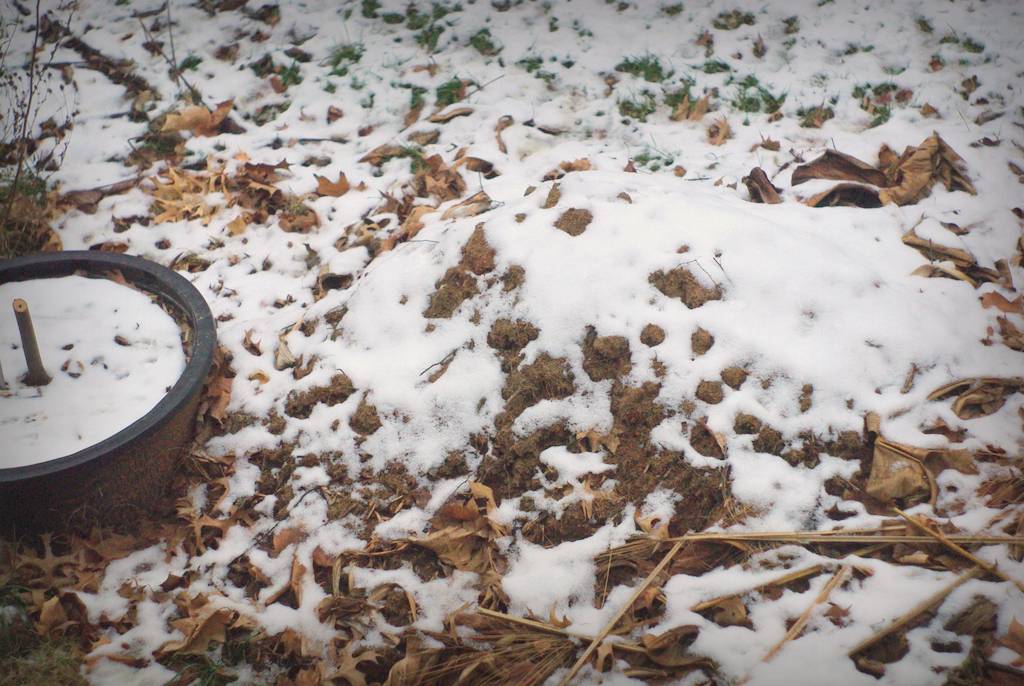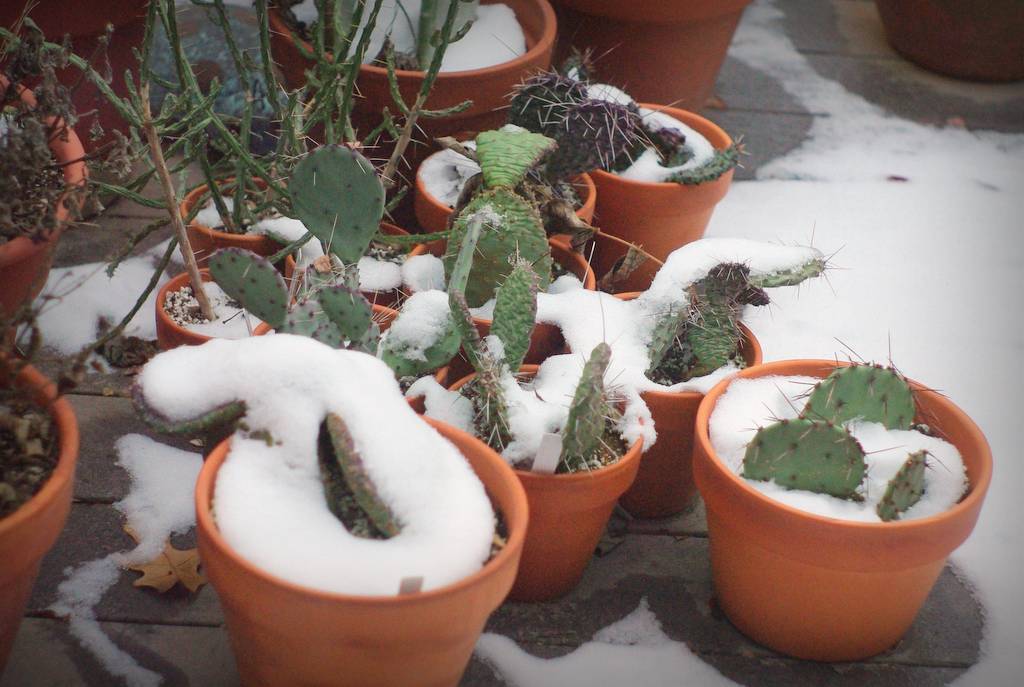drainage?
>> Thursday, January 3, 2013 –
planning
Like most gardeners, one of the things that I do during winter is make plans for next season's garden. Although most of the plans don't happen or take a couple of years to go from planning stages to actuality, I do it every year anyway. Sometimes the plans are straightforward and I know exactly what I want to do, like "build a small deck next to the pond". For other projects though, there are a lot of question marks.
One of these questionable projects was supposed to happen this past summer: prepare planting beds for my new Agaves, Yuccas, and different cactus varieties. Thanks to the walkway project I actually got a start on these beds, but the plants all remain in their pots, eager to stretch out their roots and become a part of the landscape.
The reason this project only got started and didn't proceed further can be summed up in a single word: drainage. All of these plants are sensitive to soils that stay too wet -- especially during the winter -- so need to have very good drainage. My clay soil just won't do.
As a first step -- no, let's go so far as to call it "Plan A" -- I wanted to plant all of these into raised beds, simple mounds of soil. I know from experience that other plants that like good drainage (lavender for instance) will do fine in clay, as long as they're in a raised bed, in a mound, or at the top of a slope.
That's why I created these mounds of soil I excavated from the walkway. Although it's difficult to tell from these photos, each mound is at least 12" (30cm) tall, which should be plenty to ensure good drainage for most plants. Is it enough for these species though? Will the clay stay too wet?
 |
| Photos of soil mounds are about as interesting as photos of holes are, which is to say "not very". |
Also, I know from experience that mounds of soil don't stay mounded forever. In a few years I expect these mounds to be just a few inches tall, and I don't know if that's good enough for these plants. Yes, these are also on a slope and there are moisture-sucking maple roots here too, but is that enough to ensure drainage?
Step two (I mean "Plan B") is to mix quite a bit of small pea gravel into the soil of the mounds, thinking that this will improve drainage even more. Will it though? We know that water has a difficult time crossing the boundary between different textures such as from soil to gravel (which is why you shouldn't add a layer of gravel at the bottom of your pots), so what will mixing lots of gravel into the clay really do?
One thing it will most certainly do is cause the mound to collapse even more quickly, or at least that's what I think will happen. I know one solution would be to build raised beds, probably out of dry-stacked stone. That's more work, costs money, and means I really have to think about how these things are planted -- the Opuntias will eventually form nice, wide colonies, and I don't want to limit them with stone borders. So I'm really leaning away from this (let's call it "Plan C").
Does anybody have any experience with any of this? Suggestions on what to do? What works for you?
There's time to make a decision, but I really want to have a plan ready for spring as getting these beauties into the ground will be one of my first projects.
Please help if you can!
.






No suggestions on the raised planting idea. But I am looking forward to the "small deck next to the pond"!
Any reason why you wouldn't just incorporate soil conditioner (crushed pine bark)?
Would adding sand help?
I'll report back in June. If any of my spikes survive 20" of rain and then freezing temperatures I'll feel like I've maybe cracked the clay soil/drainage code.
oh and p.s...please don't add sand. Sand + clay soil + moisture = concrete like soil.
We created a mounded succulent bed almost four years ago and it has settled much less than anticipated (i.e. it's still a decent mound in excess of 1 ft). We used approx. 20% native clay soil, 30% commercial top soil, 25% pea gravel and 25% coarse sand. (The sand has to be coarse, otherwise it will bond with the clay soil, as Loree said. In our area the best sand to use is the type they sell for sand bags.)
Our succulents have thrived in this bed and we haven't lost a single plant to rot.
Lisa: I am too!
Anon: Organic amendments would probably still hold too much moisture, and would break down in a few years. But that's just a guess.
danger: you only get 20" of rain a year? I don't know if I can wait until June!
Gerhard: I'd love to think that my mounds would be as sturdy as yours, but I think we get a lot more rain than you, it may come down much harder, and we certainly have ground freezes to contend with too. I think all of that adds up to more erosion.
I still don't know if adding pea gravel will really make any difference. Maybe I need to do some tests...
I agree, you do get more rain than we do. I've heard reports of people using 50% decomposed granite. Pathfines might be an option, too. Pumice would be best, but it's hard to find in many parts of the country and getting in quantity is cost-prohibitive.
20" of rain a year...I wish! No, that (22" actually) was just the Oct-Dec total. We ended the year with 50" of rain, 4th wettest on record. Yuck!
I mentioned the Oct-Dec total only because that's the figure that really worries me, rain + cold = bad for my spikes!
My entire garden is full of clay soil that was so heavy when I started my garden, it would have been easier to just build a pottery studio. I've been amending the soil for 9 years and here's what works: I have raised beds/berms full of native clay that has been mixed with tons (literally!) of compost, as well as growers grit, which is tiny granite pieces. I also added worm eggs/worm compost to the soil to naturally create pathways for water and air.
For really tough areas, I used a pitchfork to poke dozens of holes in the ground and then soaked the soil with a product called Penetrate, which is available on Amazon or at www.johnandbobs.com. It's amazing stuff that physically separates the clay particles to improve drainage. Anything that requires super sharp drainage, goes into a pot.